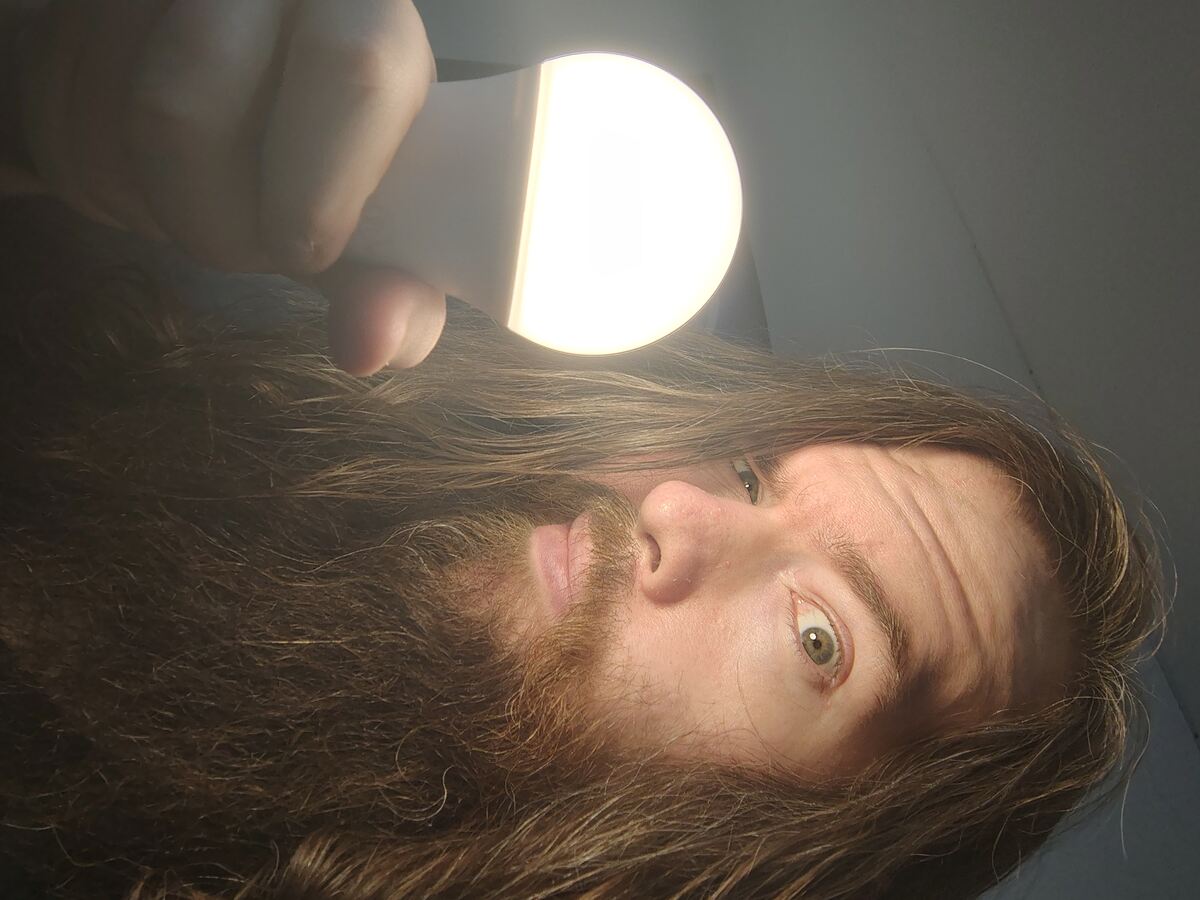Table of Contents
The human body contains enough energy at any given time to power a 100-watt lightbulb. This has led some to believe that humans are constantly wasting energy. The human body primarily utilizes three types of energy: electrical, mechanical, and thermal, each playing a crucial role in maintaining our body's equilibrium.
I would be remiss if I didn't also mention that these are not the only types of energy our bodies generate and rely upon. Biochemical, chemical, magnetic, and potential energies also play fundamental roles in how our bodies function. However, the three I’ve highlighted above are the main focus of this discussion.
Additionally, while magnetic energy is not essential for bodily functions, it’s worth noting that the magnetic fields produced by the brain and heart are quite weak and do not serve a direct functional purpose.
Nonetheless, these fields are byproducts of electrical activity within our organs and tissues—especially muscles and nerves—and can be detected with specialized medical equipment like magnetoencephalography (MEG) and magnetocardiography (MCG).
These measurements provide valuable insights into organ activity, making magnetic fields an important, if indirect, aspect of understanding our body's inner workings.
Back To Basics
Thanks to elements within our body—such as calcium, magnesium, potassium, and sodium—which all carry an electrical charge, nearly all the cells in our body can use these charged elements, known as ions, to generate electricity. These ions move in and out of cells through special channels, creating tiny electrical signals that are essential for many bodily functions.
One example is the movement of potassium and sodium ions across muscle and nerve cell membranes, generating electrical impulses that control muscle contractions and nerve signals. This flow of ions creates electrochemical gradients—differences both in charge and concentration across cell membranes—that form the electrical potential our bodies use to communicate and function properly. This can be thought of as nature’s own electrical system, powering everything from our heartbeats to how our muscles move.
There are ways to harness the energy from our bodies; one such example is one that we should all be familiar with: static electricity.
Everything in our world is made up of atoms; atoms are made up of electrons, neutrons, and protons. As you might remember from science class, electrons have a negative charge, neutrons have a neutral charge, and protons have a positive charge.
Piezoelectric Effect
Another fascinating aspect of biological energy involves the piezoelectric effect, particularly in our bones and cartilage. When these tissues experience mechanical stress—like during movement or weight-bearing—they generate tiny electrical signals. This natural piezoelectricity plays a role in bone healing and remodeling[1], highlighting how mechanical forces can directly produce electrical energy within our bodies.
Generating Static Electricity
Creating a static charge is quite simple; a classic example is rubbing a balloon against your shirt. In this example, the shirt becomes positively charged while the latex balloon is negatively charged, and the two stick.
There's a classic kids’ science experiment that illustrates this beautifully: where you take a tiny 3/8-inch bulb, attach two metal pins on each side, and hold it in your hand as you generate a static charge by dragging your sock-covered feet across a carpet.
Thermoelectric generators (TEGs)
Another way to generate electricity from the human body is by using thermoelectric generators, which convert the temperature difference between the body and the environment into electrical energy. This can provide power to wearable devices, making them self-sufficient.
TEGs are solid-state devices—meaning they have no moving parts—similar in concept to modern electronic components like solid-state drives (SSDs). They work by exploiting the Seebeck effect, where a temperature gradient across certain materials produces a voltage. These devices can convert heat flow into usable direct current (DC) power, which can be used to run small electronics. Check out this reference to learn all about the technology:
https://thermoelectricsolution...
Blood-powered electricity
Perhaps the most creative, albeit troublesome, idea I ever heard about was a concept a team of Swiss researchers came up with over a decade ago: a power-generating turbine in the human artery that uses blood flow to generate electricity. At the time, it seemed so cutting-edge, even futuristic.
However, from a common-sense and logistical perspective, it would be inherently flawed. In my opinion, it's also an ethical issue. Although the concept is brilliant for what it is, that’s neither here nor there.
I'm not sure what became of the blood flow turbine idea, but you can read about it below:
https://phys.org/news/2011-05-...
Emerging research
At the moment and during the past decade, there have been numerous active studies into using sweat[2] as a form of electricity—among other types of bodily fluids. In the case of sweat, this is known as sweat-based biofuel cells or sweat-powered bioenergy devices, more widely. I know that’s not the most original name, but I’m sure it will gain a new identity at a later point.
These are specialized bioelectrochemical systems designed to harvest energy from components in our sweat, in particular enzymes and metabolites. So, how exactly does this work?
Quite simply, a device would collect one's sweat from the surface of their skin via a band or wearable patch. Sweat contains substances like amino acids, glucose, lactate, and urea. Biofuel cells use enzymes or microbial catalysts to effectively catalyze the oxidation of these molecules.
Converting to electricity is easy—enzymes in this device catalyze reactions where the metabolite (lactate) is oxidized. Said oxidation releases electrons and protons. Electrons are then directed through an external circuit, thereby generating an electric current. The protons migrate through a membrane to complete the circuit.
As a direct result, the generated electricity could power small low-power wearable electronics like fitness trackers, glucose sensors, heart rate monitors[3], and smart watches, to name a few.
Final thoughts
Right now, at this moment, we are at the forefront of future technology. It's amazing to see just how far we have come in such a short amount of time—considering our humble beginnings, especially the limitations of the 1940s and 1950s.
Barring some catastrophic event on a worldwide scale, there appears to be no end in sight for what might be possible in the future. This, of course, can be viewed both negatively and positively. It seems that with each new invention and every bit of progress, there’s a potential for misuse.
That’s the nature of advancements—individually, we possess the ability to put our foot down and say we do not want certain uses of these technologies. Ultimately, I am fascinated by this technology and can see its real-world importance—even if I remain wary about how it might be used.
How about you?
What are your thoughts on using body energy to power devices?
-
Would you be comfortable with implants or wearable tech that harnesses your body's energy?
-
Can you imagine other ways we might harness the energy our bodies produce in the future?
-
What applications of body-generated energy would you like to see become a reality in the next decade?
Bioelectricity and Bone Healing by T. J. Jansen and E. J. R. W. van der Veen, Clinical Orthopaedics and Related Research, 2004.
Reviews how electrical signals, including piezoelectric effects, influence bone healing and remodeling. https://journals.lww.com/corr/Abstract/2004/07000/Bioelectricity_and_bone_healing.4.aspx
Liu, Y., et al. (2021). Advances in biofuel cells powered by human sweat for wearable devices. Materials Today, 47, 27-42.
Reviews recent developments in sweat-powered biofuel cells and their potential applications.
https://doi.org/10.1016/j.mattod.2021.06.007
Lee, J., et al. (2023). Sweat-based biofuel cells for self-powered wearable health monitors. Advanced Functional Materials, 33(12), 2209645.
This study discusses recent developments in sweat-powered biofuel cells specifically designed for low-energy wearable health monitoring devices like heart rate monitors.
https://doi.org/10.1002/adfm.202209645

